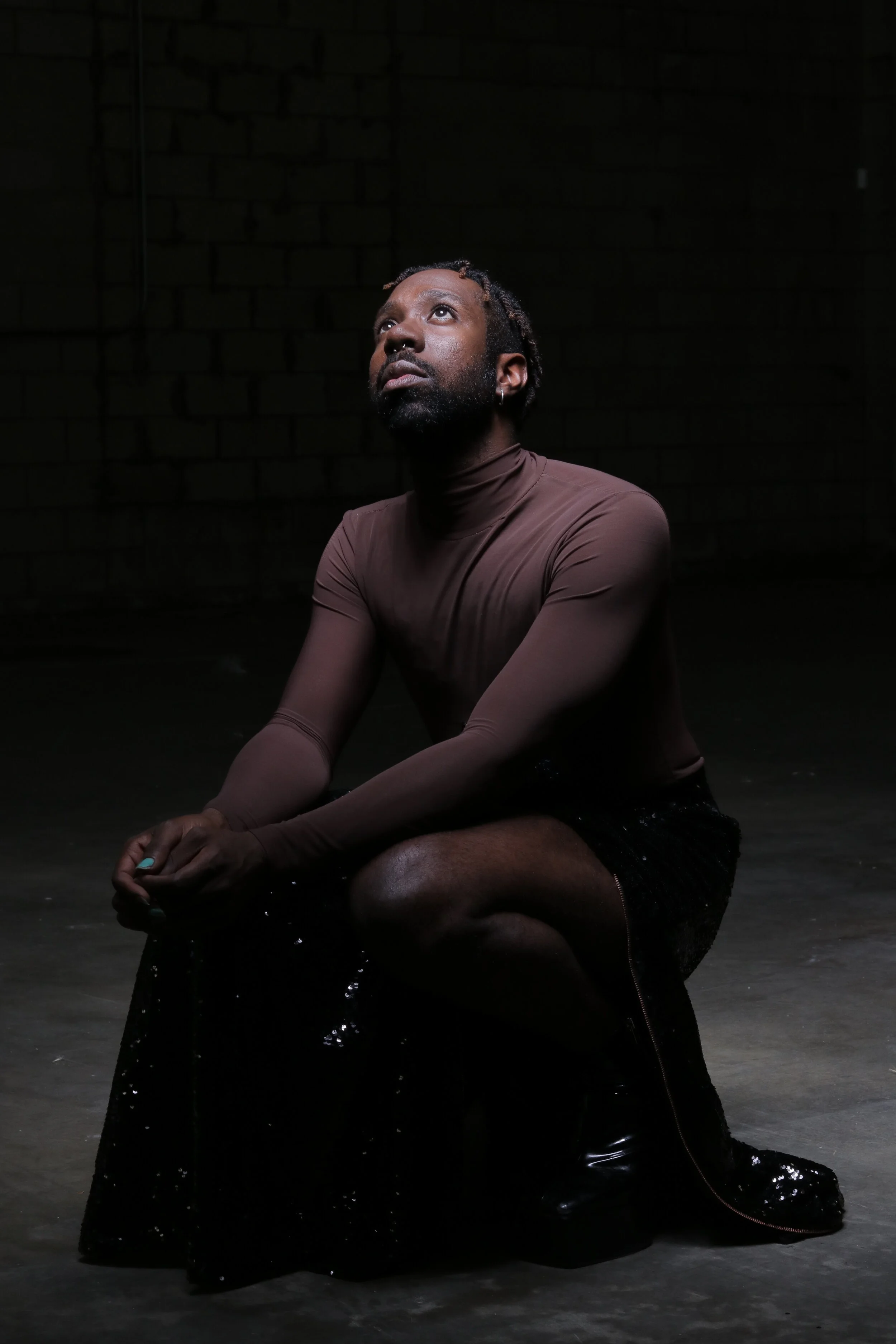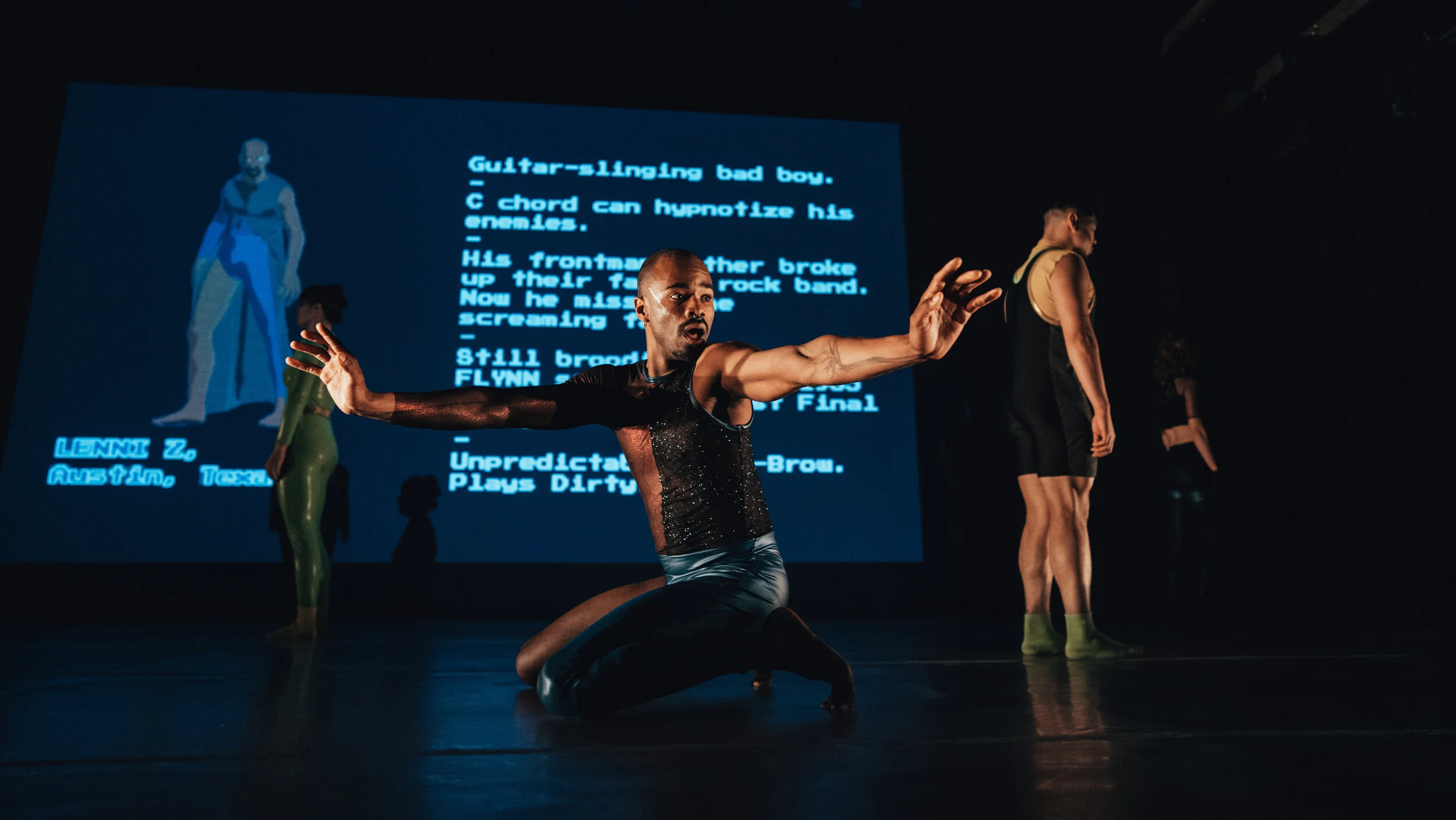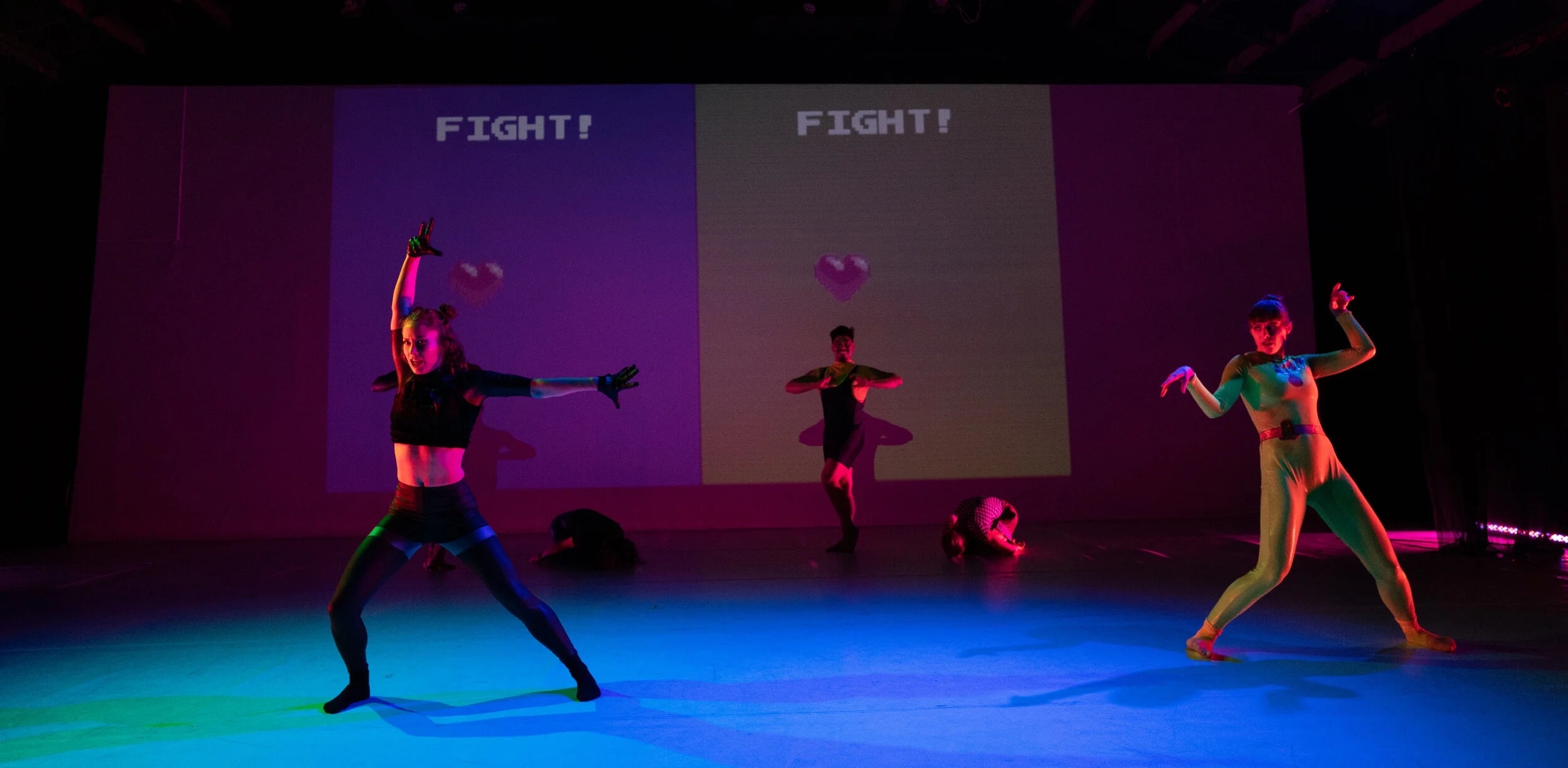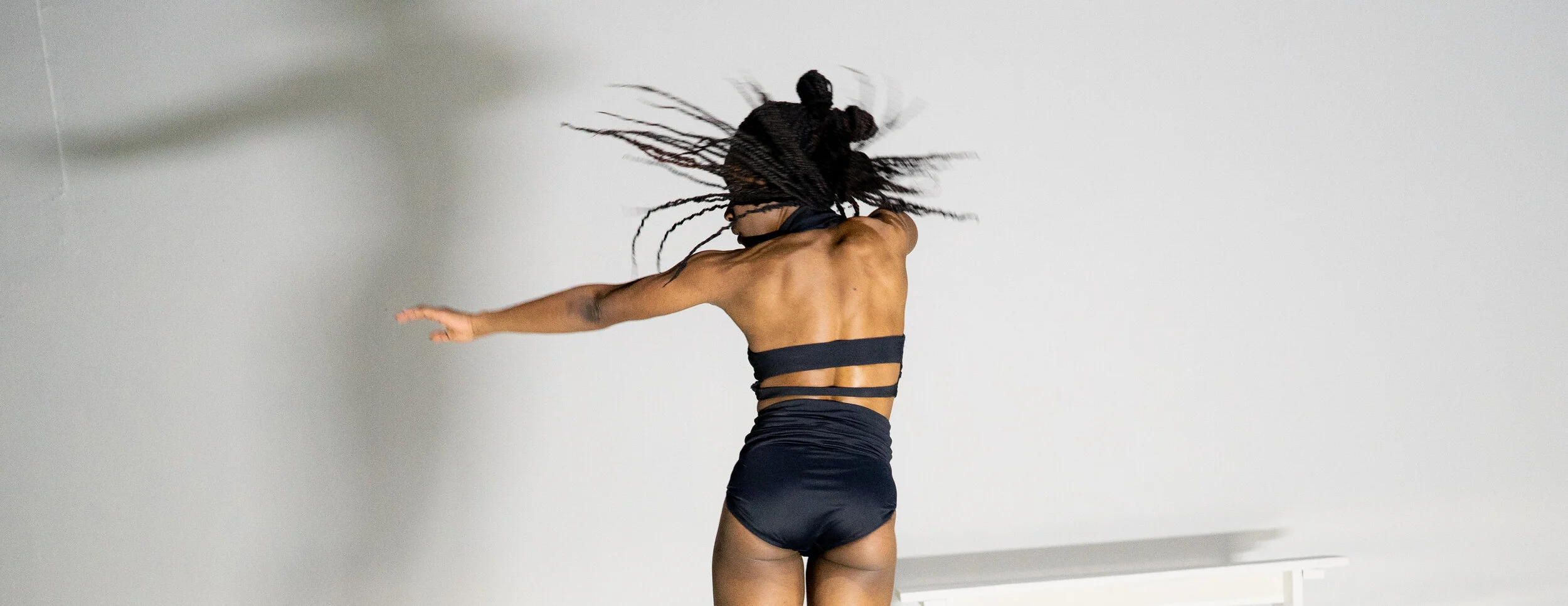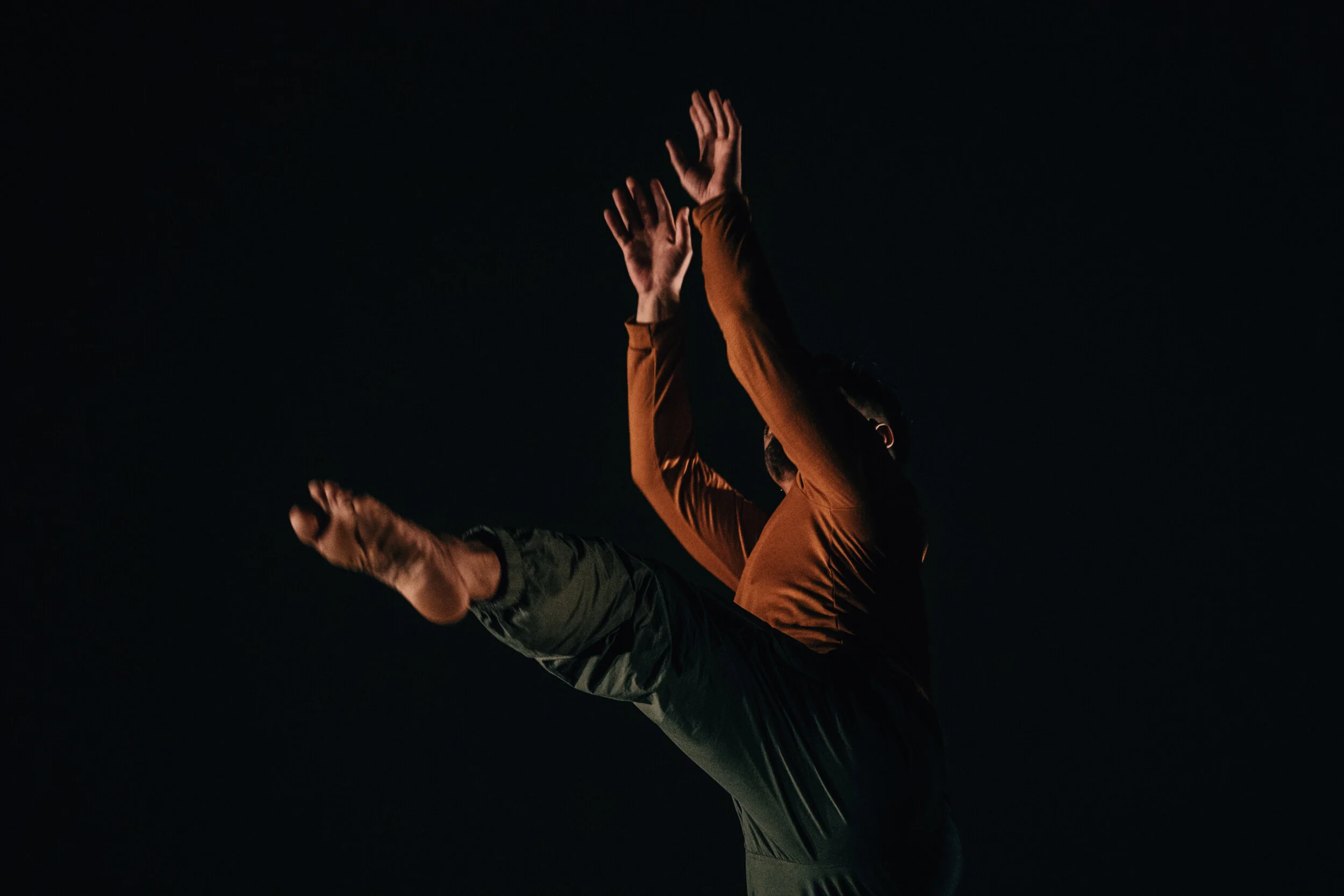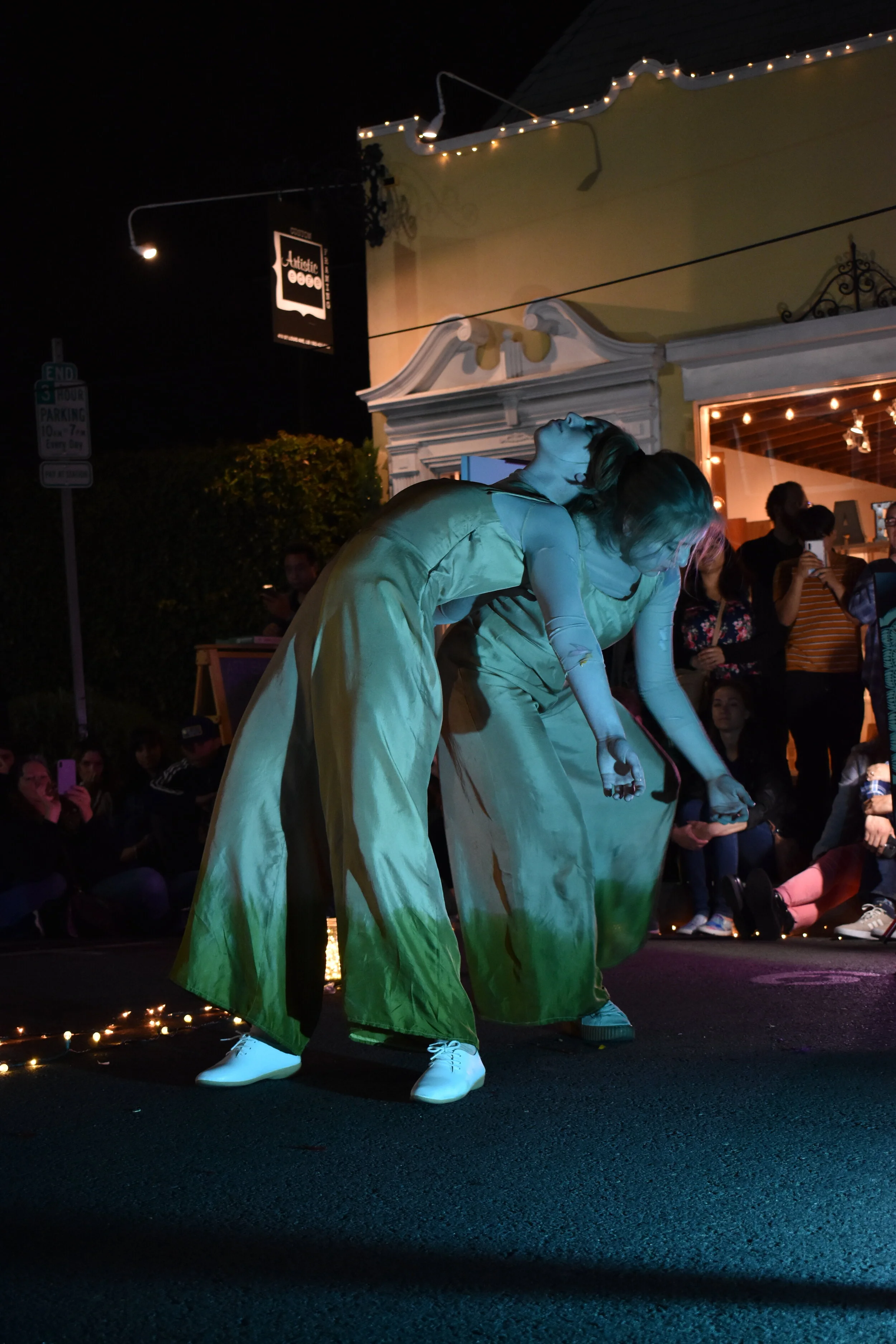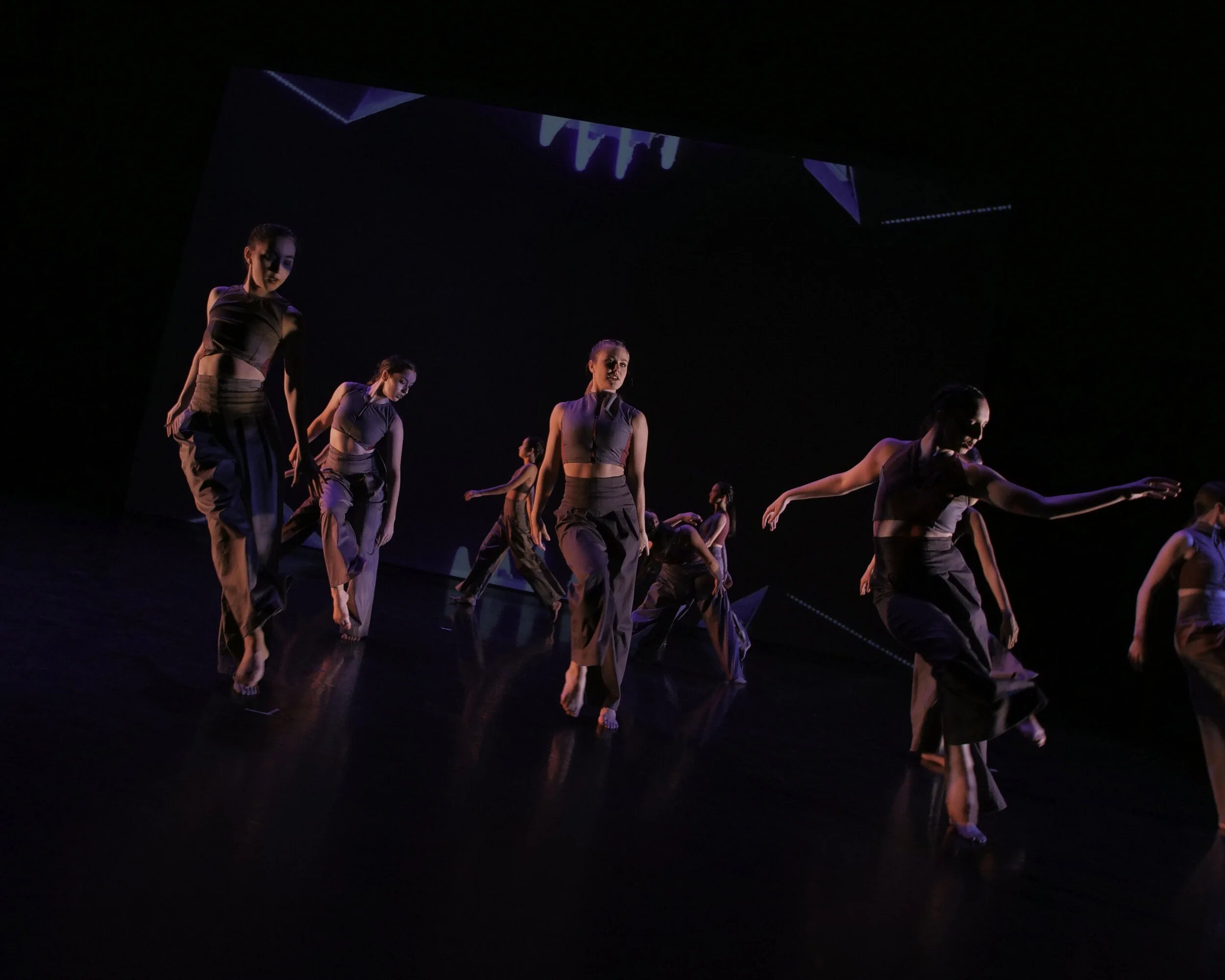Choreographer: C. Kemal Nance
Rehearsal Director: Danzel Thompson Stout
Rehearsal Assistant: Tashara Gavin-Moorehead
Live Percussionist: Aboubacar Kouyate, Malik Sow, Mokhamed Pepe Sylla
Costume Design: Kelsey Vidic
Assistant Costume Design, Hair & Makeup: Cambria Anderson
Textile Design & Weaving: Jeanne Medina Le
Weaving Assistants: Esmeralda Blando Obregon, Trinity Juarez, David Dardis, Tiffany Valmocena
Costume Technology: Erika Hansen
Hair Braiding: Taylor Jackson, Mama Braiding Hair Salon
Art Tech (Adinkra Symbol Stencil Maker): Berta Arzate
Photography: Gregory R.R Crosby
Lighting: Stacey McKenney
Prop Master: Stephanie Losleban
Media Design: Eme Ospina Lopez
California State University, Long Beach, Dance Department
Dancers: Cambria Anderson, Amber Cunnigan, Abril Fajardo, Jazmine Gregory, Malani Harrell, Taylor Jackson, Maya Sabbah, Dylan Shube, Fabián Zuniga
Understudies: Sunwoo Hong, Michael Mendoza
NOTES BY KELSEY VIDIC:
“Haba Na Haba Hujaza Kibaba” (loosely translates to “little by little the container will fill”), choreographed by Oluko C. Kemal Nance, Senior Master Teacher and Rehearsal Directed by Danzel Thompson-Stout, Master Teacher. The dance technique is Umfundalai. “Umfundalai is a contemporary African dance technique that comprises its movement vocabulary from dance traditions throughout the Diaspora.” (umfundalai.net). The late Kariamu Welsh, D. Arts is Umfundalai’s progenitor.
In meetings, Kemal pointed me towards cowrie shells, Bogolanfini (Mud Cloth) and finding a visual way to express time. He posed the question “What happens when oppressed people have had enough, when waiting no longer works?” The piece includes a vigil for Black Men that have recently been killed. With these conceptual points, I began my deep dive into research. I studied West African symbols (Adinkra symbols), weaving methods, processes of creating Mud Cloth, and contemporary African and African American artists (John Bigger’s work “Seven Little Sisters” was a main inspiration).
The question of finding a visual way to express time led me to Jeanne Medina Le and incorporating her weavings into this project. Her artistry is the embodiment of time. The act of weaving is patience and has historically given many cultures a rhythm; a dance performed to communicate. Jeanne’s weaving was the link of abstractly showing history and time. These weavings are woven in honor of one of the traditional weaving techniques called StripWeave. These artisans would weave narrow strips of cloth and then sew those strips side by side to create one length of fabric. We kept these strips narrow to drape down the back.
Learning West African history is important, it is a part of our American history. As a designer, I am excited by projects that allow me to research rich and intelligent textile cultures and learn directly from those whose shoulders we stand on today. Facets of textile knowledge, techniques and patterns we use in America today is directly traced back to West Africa and came to us through slavery.
I was intentional in creating a costume community for this piece, impossible to do alone. The importance of community and unique expression in the group I see honored in Umfundalai inspired the type of process we took in the shop. I am personally drawn to this style as it acknowledges Mother Earth, our Ancestors and Lineage, our spirit, and all in our community as essential parts of art making. I thank deeply my own spiritual community and lineage that held me and contributed to this process through prayers, meditations, and the donation of sacred cowrie shells.















































































































